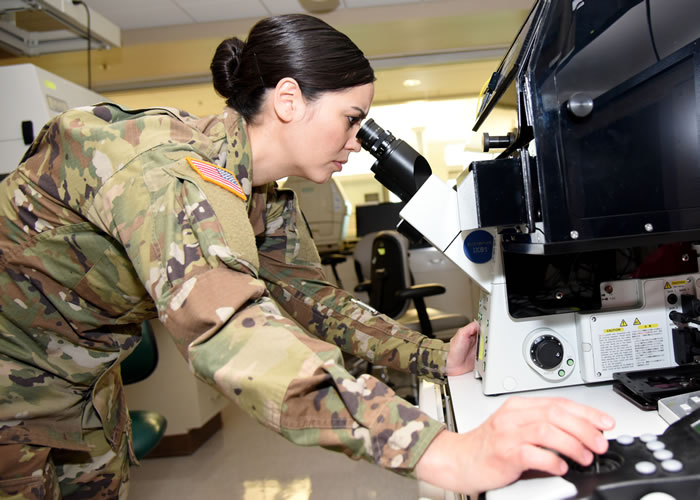USAISR researchers looking for eye injury treatment

Researchers at the U.S. Army Institute of Surgical Research are looking for a novel way to treat eye injuries that can result in blindness. According to USAISR researchers, a non-invasive treatment could be available to Wounded Warriors with eye injuries within the next two to three years.
"We are currently investigating proliferative vitreoretinopathy or PVR, a potentially blinding disorder that can result following a tear or detachment of the retina," said Capt. Elaine Por, a principle investigator and deputy task area manager in the Ocular Trauma Division at the USAISR.
Por stated that following a retinal tear or injury approximately 5 to 10 percent of the U.S. population develops PVR; however the occurrence of PVR is significantly higher in Warfighters who sustain an ocular injury on the battlefield. Currently, the standard treatment of care for PVR involves surgery to the retina or posterior segment of the eye.
"Unfortunately, the success rate for repairing a retinal tear or detachment through surgery is not great," said Por. "It is an invasive treatment option that often leads to recurrent detachment of the retina and subsequently the need for additional surgeries."
To search for a non-invasive treatment for PVR, researchers are actively working with induced pluripotent stem cells, which have been differentiated into retinal pigmented epithelial cells. Extensive literature suggests RPE cell activation as a major contributor to the pathology of PVR. Following a significant injury to the eye or head, a retinal tear can lead to the activation of RPE cells.
"When RPE cells become activated they demonstrate abnormal increases in cell migration, proliferation and contraction," Por said. "These processes altogether are thought to be involved in the development and progression of PVR."
Por has a recently accepted manuscript, scheduled to be released later this year in the Journal of Ocular Pharmacology and Therapeutics, which details her research and the data gathered thus far. She added that the laboratory research involves testing different drugs or compounds that can block the activation of RPE cells.
"I really love this project because we are attempting to find a promising therapeutic to treat a problem that is prevalent among our Wounded Warriors," said Por. "Our in vitro, or cell-based research, is providing us with some promising data, but we are continuing to test different compounds and techniques to identify a therapeutic(s) for PVR that can be translated to the clinic."














